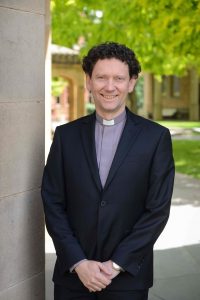 At its best Christianity encourages the kind of meditation which pays attention to the beauty and wonder we see around us every day. At its best Christianity celebrates the presence of the divine and the special in the ordinary things of life. At our best Christians see the joy around us; we see God’s presence around us and rejoice in it. The great festival of Christmas, culminating on the 12th Day of Christmas (which is the 6 January), celebrates this in particularly grand style. The birth of the Christ-child is a celebration of the divine seen in something ordinary: in a simple child, born to a modest couple. This common event is a manifestation of something special. The child will bring both peace to his people and an awareness that there is a deeper meaning to life, a deeper reality.
At its best Christianity encourages the kind of meditation which pays attention to the beauty and wonder we see around us every day. At its best Christianity celebrates the presence of the divine and the special in the ordinary things of life. At our best Christians see the joy around us; we see God’s presence around us and rejoice in it. The great festival of Christmas, culminating on the 12th Day of Christmas (which is the 6 January), celebrates this in particularly grand style. The birth of the Christ-child is a celebration of the divine seen in something ordinary: in a simple child, born to a modest couple. This common event is a manifestation of something special. The child will bring both peace to his people and an awareness that there is a deeper meaning to life, a deeper reality.
Christmas is an invitation to view everything around us as special, as given by God. For me this is captured in Matthew’s Gospel by the coming of the wise men, the magi. Normally this is celebrated in the Christian year on the Feast of Epiphany, 6 January, but in popular culture the magi are part of the Christmas celebrations well before then!
In the early Church the celebration of the birth of Christ itself took place on 6 January, because the birth of Christ, the coming of the magi, and the baptism of Christ were all part of the one celebration. Later the feasts were separated and 25 December chosen to celebrate the birth of Christ. But the magi are a reminder of how we can all look at the ordinary events around us with wonder and awe. These wondrous visitors from the East, the kings as we sometimes call them, come to visit the newborn baby.
There are lots of stories that have been built up around the magi, all of which add to their mystery. We always assume there are three of them, because they bring three glorious gifts, but in fact Matthew never mentions a number in his account. In later traditions they are known as Caspar, Balthazar and Melchior. The stories all add to the mystery of the magi, but what they remind us of, is that the powerful, the wise, and the respected, should remember to see the divine in the humble and the ordinary. The magi worship the Christ-child. They see the divine in this simple child; they see the possibility of peace; they see God’s presence. So, even though they are majestic, glorious and wise, they worship the little child, and give him these wonderful gifts.
They are contrasted, starkly, with King Herod, who sees the Christ-child only as a threat and a danger.
When we look at the simple and the ordinary with the eyes of wonder, this will affect the way we look at everything. Sometimes these moments of wonder and joy can appear out of nowhere. I’m quite a visual person, so I often gain inspiration from what I can see. On more than one occasion, when I have ridden into the Adelaide Hills for exercise and enjoyment, I have come across a koala walking on the side of the road. I quite enjoy watching the way they trundle along the road in the very deliberate way that koalas walk, looking for the next tree to climb. It is wonderful to slow down on a beautiful day and watch one of God’s creatures go about their daily business, blissfully unaffected by the human world. Truly the presence of God is in those moments of joy and wonder.
We celebrate the coming of the light at Christmas: the birth of the Christ-child, the symbol of hope, joy, peace and above all love. May we once again open our eyes to see the beauty and wonder of God’s presence all around us.
The Reverend Dr Theo McCall
School Chaplain
